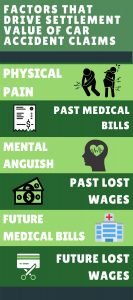Last week, the Maryland Court of Special Appeals upheld a small verdict in a truck accident case. The issue was the exclusion evidence of the defendant fleeing the scene after a car accident, even though plaintiffs put on a good case that the act of fleeing itself caused the plaintiff’s injury. I understand the logic of the holding and understand how the court found as it did. But I disagree with the ruling.
Here are the facts is Alban v. Fiels. The plain tiffs, a married couple in their 70s, were injured when their truck collided with another truck in Baltimore County. After the accident, the defendant briefly returned to the scene and then fled. Witnesses said that the defendant laughed as he drove off. That sounds so crazy, I know. But that is what the opinion said. I’m picturing Jack Nicholson in his Joker prime.
tiffs, a married couple in their 70s, were injured when their truck collided with another truck in Baltimore County. After the accident, the defendant briefly returned to the scene and then fled. Witnesses said that the defendant laughed as he drove off. That sounds so crazy, I know. But that is what the opinion said. I’m picturing Jack Nicholson in his Joker prime.
The insurance defense lawyers wisely did not dispute liability. The case went to trial for compensatory damages. The trial court granted the female plaintiff $5,000 in non-economic damages and $5,000 to the couple for their joint claim of loss of consortium. The entire award was $10,000 plus costs. I don’t know what the underlying medical and injuries were, but if you are getting a $10,000 verdict in a jury trial, things didn’t go well.
The plaintiffs’ appeal was based on the inability to get in the “fleeing the scene” evidence. Their attorney argued that it was an error to exclude the testimony of accident witnesses and the plaintiff’s psychologist because emotional damages were part of the original complaint. Plaintiff said that her PTSD stemmed from the moments after the accident when the defendant returned to the scene. She testified that she feared they would be killed while they were trapped in the vehicle. Plaintiff said that she has had ongoing anxiety problems and has suffered from prolonged bouts of crying and sleeplessness since the accident. Plaintiff’s physician testified that she was permanently disabled with post-traumatic anxiety.
This is a good test case for admitting this evidence. Often plaintiffs’ accident lawyers just want to get this kind of evidence in order to inflame the jury to hate – appropriately – the defendant. Here, the plaintiffs at least arguably were really hurt by defendant fleeing the scene and it really – at least allegedly, is hard to read these things and know – caused harm. We have plaintiffs in their seventies… it is not a stretch by any means. The trial court stuck to the usual playbook and excluded evidence of the defendant’s post-accident conduct because of its prejudicial nature. Continue reading
 Maryland Injury Law Center
Maryland Injury Law Center









